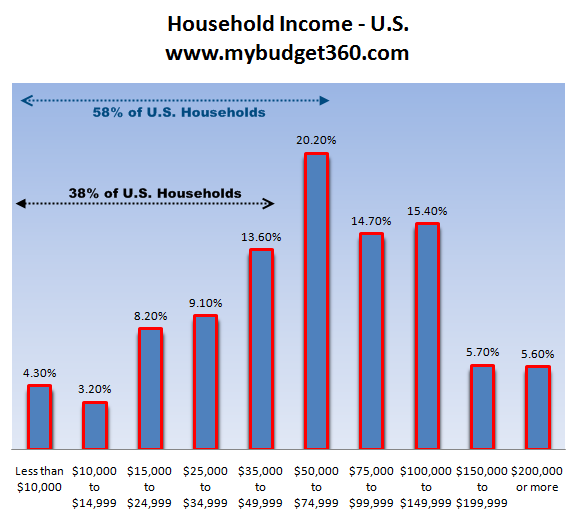
"“Unlike President Obama,” (Romney) said, “I will not raise taxes on the middle class.” While the definition of the “middle class” is flexible, Obama has in fact asked Congress to retain current tax rates for families earning less than $250,000 a year." E.J. Dionne
***
65% of American households earn less than $65,000.00 a year.
http://www.mybudget360.com/how-much-average-household-income-us-recession-income-distribution/
***
65% of American households earn less than $65,000.00 a year.
http://www.mybudget360.com/how-much-average-household-income-us-recession-income-distribution/
***
How much does the average American make in 2010? Examining new data on U.S. household income numbers and high income earners. 100 million Americans make less than $39,999 per year.
Examining the average income for Americans sheds a very troubling light on what has happened to income over a very financially destructive decade. If we look at the median household income in the U.S. this actually underplays the falling behind of wages because we are looking at households with multiple people working. Without a doubt the median wage is bolstered by two income families but when we break this out, we realize how challenging things have gotten for most Americans on a very personal level. You might even be one of these people (the odds are good that you individually make less than $40,000 per year given that 66 percent of individual Americans make this amount or less). For this article I will be looking at recent income data from the Census, Social Security, and also examine tax receipts for the Federal Government. What we find is a pooling of money at the top while most Americans have found a smaller paycheck with much less employment security. One startling fact that I found looking at Social Security information was that 100,000,000+ Americans earn an average of $39,999 or less a year (66 percent of all Americans). When we break down the cost of daily living and what one would expect out of a middle class lifestyle we get a better understanding of why so many people feel that they are being left behind in a dust cloud of economic verbiage.
I first wanted to break down the average income of individual Americans through examining Social Security data:
Source: Social Security
For 2009 Social Security had 150,917,733 wage earners. Keep in mind that in some cases you might have people only working for half a year or part-time work but this data gives us an excellent personal look at the average income of Americans on a very micro level. One startling reality is that 72,000,000+ Americans earn $25,000 or less each year (almost half the wage earning population). This is why when we look at the median household income of $50,000 we come to the stark realization that two incomes are necessary just to stay above water. When only a few decades ago one blue collar income was enough for a middle class way of life (i.e., modest home, a path to a public college, etc) now two incomes are barely enough to pay for the daily necessities.
Another 34 million Americans earn an average of $25,001 to $45,000 per year while 33 million earn between $45,001 and $99,999. Going up to an average of $99,999 covers 93 percent of all individual wage earners in the country. This is where the vast majority of Americans reside. The numbers quickly dwindle as expected when we hit the upper income ranges. What is interesting is the vast difference between those who earn $20 million and $49 million and those who make over $50 million. The data reveals that over 353 Americans earned between $20 and $49 million and the average amount was $28 million. Compare this to the 72 that made more than $50 million with an average compensation of $84 million. To put this into context, the top 72 Americans earned over $6 billion in 2009.
The lowest paid 24,000,000 Americans earned an average of $2,061. Again, this is merely to put all the data on the table. It also shows how tilted things have gotten. I wanted to see what the top 1 percent earned in total compensation for 2009 and compare this to the bottom half of wage earners:
Source: Social Security
“The top 1 percent of wage earners in America earned more than the bottom 48 percent of Americans. If you are wondering where the middle class is evaporating to it is rather clear.”
Substantial income inequality is not the path to a strong and vibrant middle class. 17 percent of Americans are either unemployed or underemployed so the lower end of the curve is dragging more people lower. Yet the top end remains rather strong. Some will argue that the very wealthy have also been hit. This is true and we have seen this in the top wage categories. But this is the difference between earning $50 million and $40 million. The marginal impact on lifestyle is minimal. Losing your income when you have a household making $50,000 combined and suddenly a $25,000 wage earner is gone can throw things into a tailspin.
There is nothing wrong with earning tremendous amounts of money. In fact, that is the spirit of capitalism. But how many Wall Street banker types that earned money betting on the failure of Americans while enjoying government handouts as protection made it to the top of the bracket? This isn’t rewarding capitalism but a modern form of corporatocracy. The reason the lower end became poorer is because those on the lower end had to shuffle and redistribute wealth to the higher end of the curve in the form of bailouts. Consider it a form of reverse trickledown theory.
Let us now look at the median household income data from the Census:
Source: Census
The median household income for Americans is $50,221. The above curve seems more balanced out but Census data tops out at “$200,000 or more” so it doesn’t break down data as clearly as the individual Social Security wage data. 3.9 percent of households make more than $200,000 a year. So the incredible majority of Americans make less than $200,000 and this is for overall household data so we have many with two or even more income earners here. So why did the media object so loudly for having higher taxes for those making more than $250,000? Well refer back to the Social Security data. Also, the line was fed that many of these high income earners are the job providers of Americans. Of course the implicit and subtle argument meant that if taxes go up on this group they will fire more people. We can debate the merits of the tax increase at the very top but the amount of rhetoric we heard on mainstream TV shows you that the top 1 percent control much more than just the wealth of the country.
You also need to remember many of those at the top take money in various forms like capital gains which are only taxed at 15 percent. The vast majority of Americans have small amounts of stock and the bulk of their net worth is stored up in real estate. The crashing housing market has harmed them the most while the improved stock market has targeted a smaller segment of the population.
Since the peak, Zillow the real estate tracking company estimates that residential values have fallen by $9 trillion. Yet stock wealth has bounced back since the low in early 2009. When we look at income figures we see there is some troubling inequality in the system and it has only become magnified in this recession.
While this is happening tax collections for the government are back up yet spending in the form of bailouts, deficit spending, war, and other government expenditures has also increased much quicker and those at the top are the biggest beneficiaries:
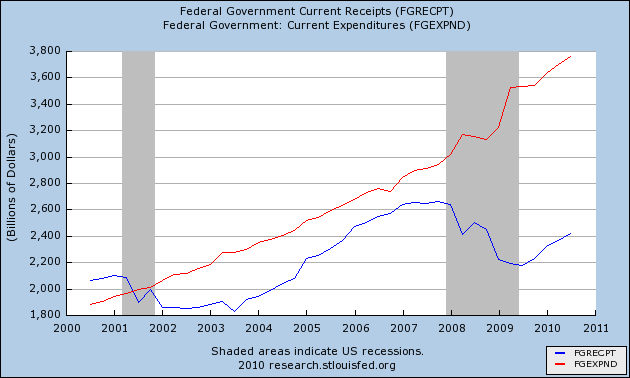

In essence the bailouts have gone to the wealthiest and many of the top have argued the uptick in tax revenues is somehow natural. It isn’t and you can just look at the above data. This is merely income redistribution but not how most of us would think about it. After all, why would the wealthiest in the U.S. need to take more money from those at the bottom rung? We are now back to 2005 levels of revenues. Yet this in itself is a bit deceptive because the purchasing power of the U.S. dollar has fallen over this decade as well:
The U.S. dollar is down 20 percent from the start of the decade. What this means is the purchasing power of Americans has eroded over this time. It is also the case that wages have gone negative over the entire decade with stagnant pay and inflation chipping away as well.
So how much does the average American make? $38,000 even when we add in billionaires and everyone else. This is the individual amount. It would be tough to even come close to a middle class lifestyle with that income. Let us run a quick scenario:
The average American is taking home roughly $2,500 per month. We are using Florida as an example here. Let us just run some quick numbers to see how far that $2,500 will go:
What happens if the car breaks down? What happens if you get a cavity? What happens if you lose your job? You can see how tight the budget is above and we are keeping it basic. Many are told by financial planners to sock away 9 months of emergency funds. It will take years for the average American to put away $22,500. Is it any wonder why millions of Americans rely on Social Security as their main source of income? Millions of Americans are still on verge of losing their unemployment insurance and are basically one check away from being on the streets conjuring up visions of soup lines of the Great Depression. The average income doesn’t even come close to paving a way to a middle class lifestyle. What you have is a shrinking middle class where people are working harder and harder yet being thrown off the treadmill one by one.
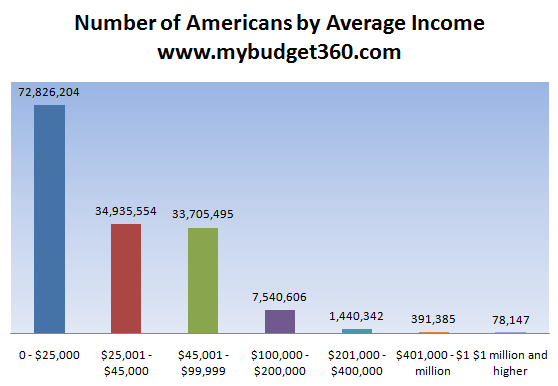
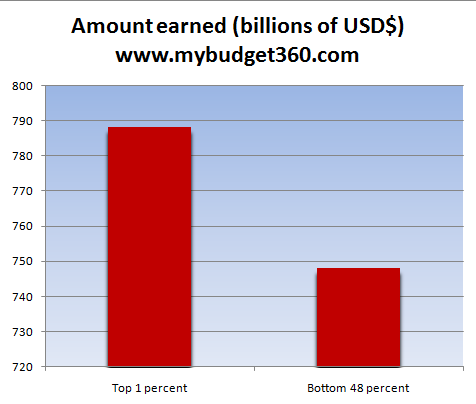
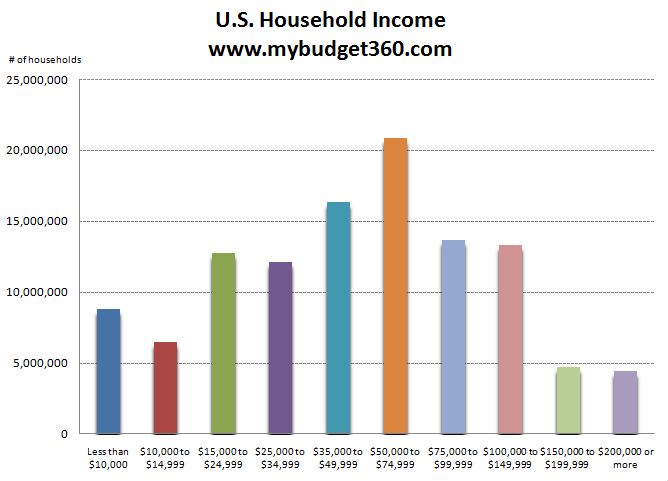
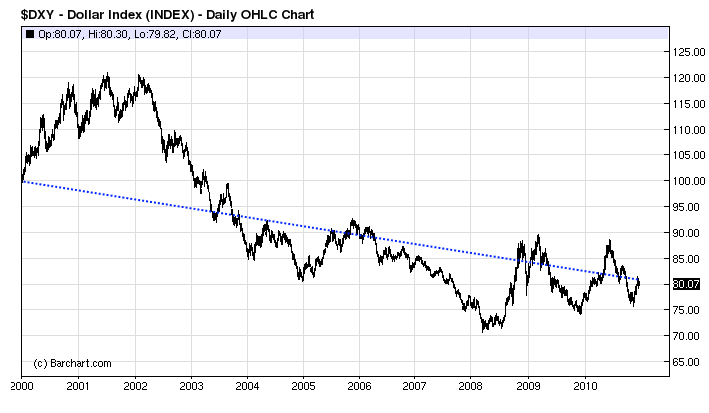
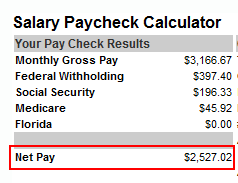
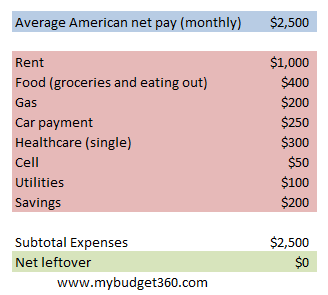
 If you enjoyed this post click here to subscribe to a complete feed and stay up to date with today’s challenging market!
If you enjoyed this post click here to subscribe to a complete feed and stay up to date with today’s challenging market!
No comments:
Post a Comment